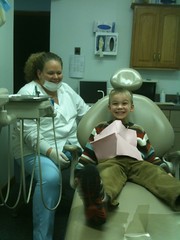So what is this set of homework procedures I mentioned in my last post? Well here it is, and the story behind its development.
As I believe homework is meant to be used, I initially wanted to assess the students ("formatively" speaking) on their ability to practice whatever mathematical techniques I desire them to posses at an independent level. With knowledge of their capabilities, I could then scaffold the intensity of instruction from this baseline. So I thought that giving students a short assessment at the end of the week containing all of the main goals of each of that week's homework assignments was the way to go. There were several problems I and other colleagues saw with this set up that lead to an improved final plan.

Initial concerns regarding the fact that there were several issues developed by assessing students on a Friday. In our district, the Friday schedule for students is shortened by one hour to allow for common planning time for staff at the end of the day. Although offering an end of week summary has its merits, adding a weekly assessment at this time made me feel that new or continuous instruction or student participation in ongoing projects would take a back seat to this initiative. Also, I've always felt that assessing within the week something was taught drew too much on information stored in the student's short-term memory; a location where content is easily forgotten.
Bump the assessment to Monday was my solution to both of these issues. Since a weekend's time will have passed, now I would be assessing students based upon the content that was stored within their long term memory; a place where thoughts tend to "stick". Of course, what about content that never made it to long-term storage? Since I wanted a procedure that would give the students an academic incentive to do homework beyond getting a simple check for completion; I thought, why not let them use their homework solutions to take the assessment? This would then offer them a chance to use homework as an assistive tool. Additionally, this would allow the students to utilize their homework to associate forgotten information with whatever bits and pieces of last weeks content made its way to long-term memory storage. Since brain research has shown that associating new or forgotten information with long-term memory improves retention, I thought I had a winner. Still one issue remained.
A colleague pointed out, "What if a student learned the content so well, they didn't need to utilize their homework as a crutch to demonstrate mastery on these Monday assessments? Would they just simply stop doing their homework?" I thought, "So what; as long as they learned the content, what does it matter if they do their homework?" After some debate, I was eventually convinced that accountability for timely completion of individual out-of-school assignments was an important goal of assigning homework. So now while students complete the Monday homework assessment, I have the time to check their assignments for completion and enforce accountability.
So in short, here are the procedures:
- Assign homework.
- Next day give the answers and allow time for questions.
- The following Monday give an "open homework notebook" quiz based upon the prior weeks assignments. "How did you get..." journal style questions work best.
- While the students take the quiz, I will visually check that the necessary assignments are complete which will contribute to two points on the assessment.
- Give back the assessments the next day and modify instruction as needed.
As the first summative assessment for my students slowly approaches, I plan on reflecting on the continuing successes and/or failures of these procedures in a later post. Right now, the Monday night grading is a bit much, but I think it seems to be worth it. I am already farther ahead in content than I was in previous years which will hopefully allow more time for experimenting with new methods of teaching and learning that I've been wanting to try.







